A rusty trolley squeaks round a depot amid lofty shelves stacked with cardboard boxes of crisps, Coca-Cola and canned veg. A dusty cash & carry card is fished from a trouser pocket with a shopping list scribbled on the back of a napkin.
For years, that’s been the typical scenario at UK food wholesalers. But while “there are still companies who try to follow that traditional model” says Mushtaque Ahmed, chief operations officer at JJ Food Service, “to remain competitive in the market you now have to be doing something with technology.”
Ahmed admits he jokes with colleagues that “maybe we’re an IT company delivering food” as his team of technologists work on the latest digital development behind glass-panelled offices at the company’s Enfield headquarters.
From apps to algorithms to alerts via mobile, you name it, there’s a wholesaler trying it. So what is it that’s driving this shift to a new technological age for wholesaling? Who is doing what, and with what success? And where can wholesalers look next to differentiate when it comes to technology?
Demand from customers has been a crucial driver for change, points out Ed Sibley, client director at Him!
“The next generation of retailers coming through are embracing technology within every aspect of their lives. They are looking for more convenient ways to order, manage their stock and stay ‘connected’ with their wholesalers,” he says.
What’s more, 38% of a retailer’s weekly stock is bought from outside its main wholesaler, so technology has become a means by which to buy back loyalty and drive sales. “Wholesalers who do this well will benefit from loyalty, efficiencies and enhanced customer data,” he adds.
Using technology as a differentiator is an example of how wholesalers have followed in the footsteps of the major grocers. And the new direction makes perfect sense to Salih Sheikh, marketing manager at Bestway.
“A lot of the time people look at wholesale as the lesser cousin of the major mults and the consumer-facing retail market,” he says.
“But there’s absolutely no reason why something that encourages a consumer to buy a product in a supermarket would not work in encouraging a retailer to buy a product in a depot. Retailers are also ordering members of the public and they’re being influenced by technology just as much as a consumer going into a store.”
As a result, online orders are now big business for wholesalers. The UK’s biggest, Booker, has seen online sales grow from just £15m in 2000 to £874m this year - an increase of 5,700% and a sizeable 18% of the total wholesale business.
“Our basic online proposition resonates very well with our customer,” says a spokesman for Booker. “Our online pricing is the same as our cash & carry; we have no hidden surcharges, no hidden delivery fees, and no credit or debit card charges online.”
Amazon-esque
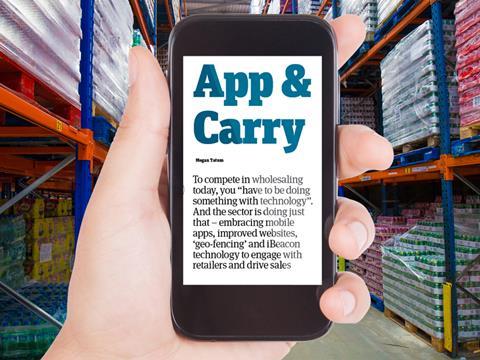
Him! says 87% of delivered wholesale customers now order their stock online versus 74% in 2014 and it predicts that figure to grow further, after 72% of retailers said they intended to use the facility more in the next 12 months.
At JJ Food Service, 63% of orders are now placed via its website, with plans to propel that figure higher in the coming months, says Ahmed.
Yet it’s a growth channel that hasn’t come without its challenges, he adds.
“The downside is that you lose the impulse buying of the cash & carry environment where people are pushing the trolley, they have a shopping list of 50 items, and they come out with 100 items because there are other promotions they’ve picked up on,” he admits.
To overcome this, JJ has focused on personalising its website, submitting three years of sales transactions to develop Amazon-esque algorithms capable of recommending additional items based on items frequently bought together.
“Who would think yoghurt had any relationship with frozen sweetcorn?” says Ahmed, as he demonstrates the device. He trusts its recommendation, though: it is backed up by no fewer than 27 billion calculations, after all.
Account customers logging in will also find themselves on a personalised homepage, so “different customers have a different way of ordering”. And it works. Since it began using this forecasting in October 2014, the wholesaler has seen a 5% increase in the number of items bought at checkout, with 20% of ‘frequently bought together’ suggestions also now ending up in a customer’s digital basket.
Since July, all this data has been channelled into the wholesaler’s new mobile app. “Our mission is to increase the 63% of online orders into the next league,” explains Ahmed. “That’s why we took on this app journey, to bring ordering to the customer’s pocket.”
Easy ordering
Business barometer
Does your wholesaler of choice make effective use of digital technology?
● Yes70%
● No 26%
● Not interested 4%
Do you use online ordering, or would you like to?
● Yes 48%
● No 52%
Do you use click & collect, or would you like to?
● Yes 13%
● No 87%
Does your wholesaler use iBeacons?
● Yes10%
● No 36%
● No idea 54%
Does your wholesaler offer a mobile app?
● Yes 27%
● No 53%
● No idea 20%
Developing an app is a journey only currently taken by a select few wholesalers on the front line of digital innovation, but there’s growing demand and convenience is key: 91% of wholesale customers told Him! that an ‘easy ordering process’ was vital.
“I’ve got customers now who when they’re on a split shift, they’ll take a break in the afternoon, sit on the step outside, have a fag, get their iPhone out and place their order,” says Sue Guilfoyle, national account manager at JJ Food Service. “It’s done at their leisure and it no longer feels like work.”
Rival Bestway, whose web sales increased by 47.1% to £176.3m in 2014, has seen a steady climb in users of its new mobile app (by 18%-20% each month) since it launched in September 2014. It subsequently won a Grocer Gold award for the app, which it built in house.
“Once people start using the app it becomes their primary way of ordering,” says Simon Hogg, digital marketing analyst at Bestway, adding that 15% of all online orders are now placed via the app.
While the JJ Food Service mobile app uses mobile internet connections like wi-fi, 3G or 4G so users can see constantly updated availability and pricing, Bestway has opted for an app that allows users to build orders offline, enabling them to check stock in their basements with no signal, for example. They will need an internet connection to submit final orders, though.
And, says Bestway, it is always looking to improve its digital features. “For a lot of our competitors the end point has been launching the app and then it’s lain stagnant,” says Hogg. “Whereas we’ve already had several iterations going through, and we continue to [evolve the functionality].”
Its customers, for instance, can use a product scanner on their smartphones, an “incredibly powerful tool” says Hogg. A retailer working in a store that spots they’re about to run out of Snickers bars, for instance, can scan outer packaging with their mobile camera, and it will automatically add to their online basket.
Having placed their orders on a PC, tablet or mobile, many customers are no longer keen to wait around for delivery, and the provision of click & collect services is therefore also appearing at more and more wholesalers, with varying levels of pick-up.
A third of online orders are processed via this service at Bestway. Booker says it has seen a “limited rollout” of the service, while half of all online orders at JJ Food Service are now fulfilled via click & collect. (Vehicles ranging from a Nissan Micra to a Mercedes and a van masquerading as a pizza oven queue up at JJ’s Enfield depot to collect orders according to allocated time slots.)
Indeed, this change to its business model has meant the number of delivery vehicles sent out by JJ is gradually falling, from 40 two years ago to 34 today. And the realisation that more customers were turning up to the depots prompted JJ to renovate its pay counters with slick marketing videos on a loop, and the latest promotions on display, to ensure its brand image didn’t suffer.
iBeacons
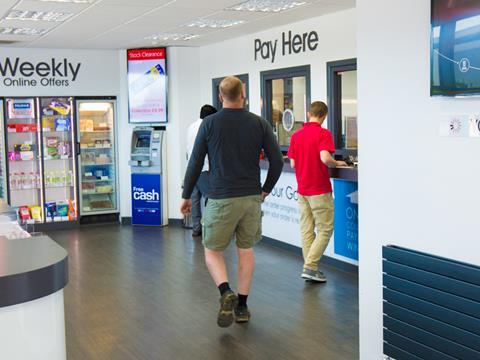
Technology isn’t restricted to behind a screen, of course. For wholesalers such as Bestway, which continue to welcome a high number of customers through their doors, location-based innovation has also been high on the agenda.
“It’s that expectation of personalisation, and real content-sensitive stuff,” says Hogg. “It’s all based on mobile technology and knowing what you’re doing at that particular time.
“It’s definitely the way all the big retailers are heading, and the likes of Facebook. So far, no other wholesaler or B2B business has cottoned on to that, so we’re pushing the vanguard a bit.”
From March this year, timed to coincide with the wholesaler’s annual Great Rebate promotional scheme, 600 iBeacons have been placed across 60 of Bestway’s depots. Linked into the wholesaler’s app and centrally controlled, the beacons deliver targeted, customisable messages depending on where in the depot a customer is located.
So a customer strolling through confectionery will be alerted via a push notification that Kit Kats are available on promotion, thus “ensuring customers have offers that are relevant to them, at the right time in the right place,” says Sheikh.
“Every bit of promotional material plays its own role,” he adds. Glossy brochures to flick through are still a crucial component for many customers building their shopping list, but “we also know the importance of trying to get them to buy products off their shopping list”.
The beacons “encourage that impulse buy within the depot, and you tailor the communication to a time when it’s relevant for the retailer”.
So far, the wholesaler has only sent text-based alerts via the iBeacons but plans to experiment with images for its next promotional period, and doesn’t rule out video in the future. “We’re really keen to try things out and see what works,” says Hogg.
Geofencing technology now also sparks off messages when a mobile app user comes within a certain radius of a depot, with a welcome, or farewell note. And it’s always looking to take this innovation to the next stage.
“We know this is where the future is headed,” says Sheikh. “It’s making sure we’re ahead of the game, and future-proofing ourselves.”
It is already “experimenting” with a mobile feature that plans routes around the depot depending on a customer’s shopping list, for instance, which it hopes to have available within the next couple of months.
At JJ Food Service, innovations are also in the pipeline, including a drive-through ordering system with which staff can simply use the app technology to take orders from the car window.
“There’s no end to the evolution of our technology because there’s no end to the evolution of dining and food trends, and consumer patterns,” says Guilfoyle.
“We’re led and directed by what the supermarkets and big players do, and ultimately we’re going to continue to do that to make sure we’re one step ahead.”
And with traditional wholesale undergoing this rapid digital transformation, all wholesalers will need to make sure they’re keeping up with the pack. Or as a Booker spokesman succinctly puts it, if they don’t, “they will not be in business” for much longer.



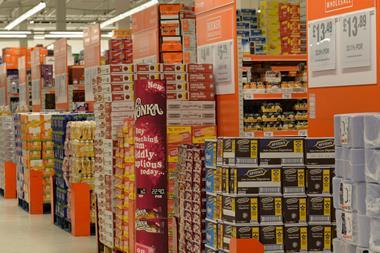







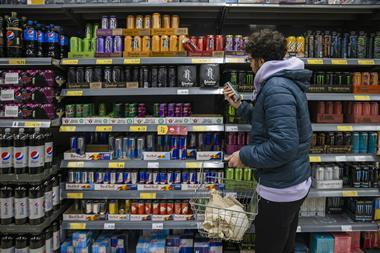
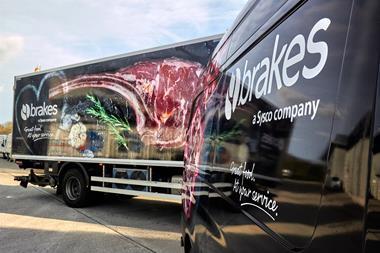
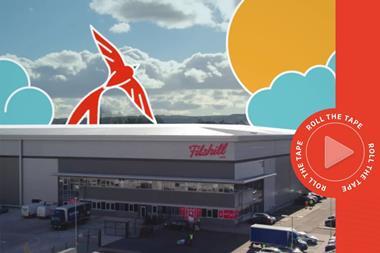
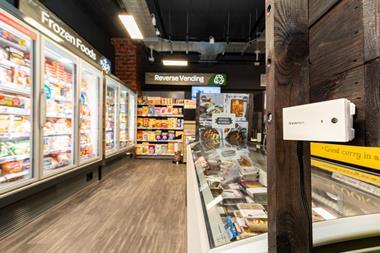
No comments yet